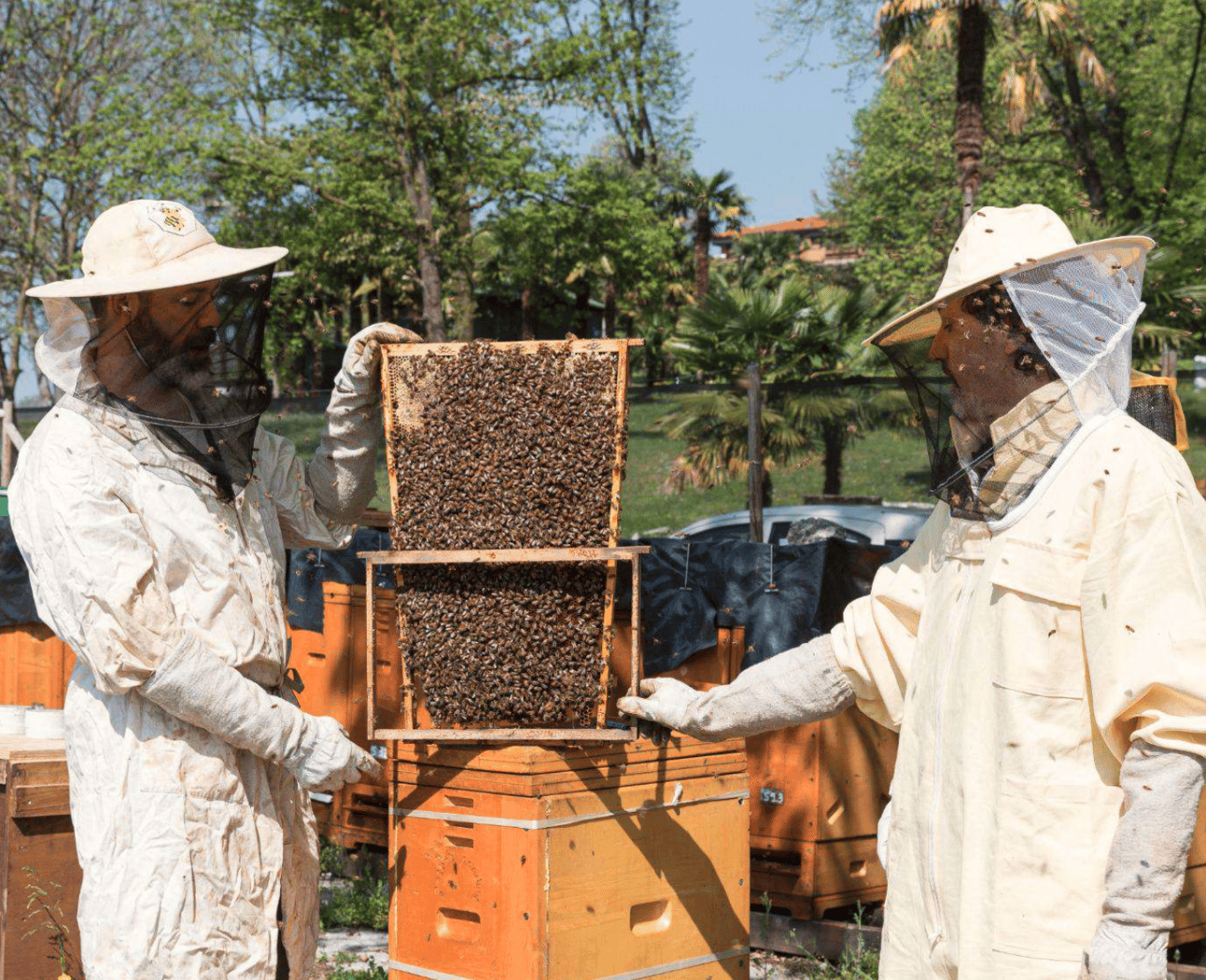

Will we see you in Copenhagen?!
Apimondia 2025 is this week (September 23-27), and Primal Bee is here in full force. Our team is in Copenhagen with cutting-edge research, live demonstrations, and plenty of opportunities to discuss thermodynamic beekeeping with fellow enthusiasts.
Find us at Booth A-53 for hands-on demonstrations of our hive systems and one-on-one conversations about temperature-controlled colony management.
Don't miss Gianmario Riganti's presentation on Thursday, September 25th at 17:15: "Increased pollination activity by honey bee colonies managed in thermodynamic hives" - the research behind why our customers see such dramatic improvements in colony productivity.
Whether you're curious about the science, considering an upgrade to your operation, or just want to connect with like-minded beekeepers, we'd love to meet you in person.


Every beekeeper knows this frustration: three hives in the same yard, same management, same conditions. One enters winter heavy with honey, another needs 20 pounds of sugar, and the third requires constant feeding just to survive.
The difference isn't colony genetics, beekeeper skill, or seasonal variation.
It's thermal efficiency.
Strong colonies conserve energy that weak colonies waste on survival, allowing them to build the natural honey stores that eliminate feeding dependency. Recent research reveals exactly how this energy allocation works—and how thermal design determines which colonies achieve self-sufficiency.
The Energy Conservation Formula
Research by Groeneveld et al. (2024) found that energy-efficient colonies maintain stable brood-bee ratios and achieve 95% survival rates over four years, while environmentally stressed colonies show 38% reductions in brood-bee ratios, ultimately resulting in 0% survival.
The mathematics are precise: Stabentheiner et al. (2024) found that brood rearing costs colonies approximately 50% of their annual honey stores. In traditional wooden hives, bees burn through an additional 26% more nectar just fighting poor insulation—energy that could have been honey in your extractor.
That means a colony that could produce 60 pounds of surplus honey in an efficient hive might only give you 35 pounds in a traditional wooden hive. The missing 25 pounds went to heating costs instead of your honey house.
Real-World Engineering Results
This principle guided Primal Bee co-founders Alex Gamberoni and Gianmario Riganti's development journey. After three years of 100% winter losses in Northern Italy despite extensive feeding (26-50 liters of syrup per colony), they discovered a thriving colony in a massive cedar tree.
When mechanical engineer Gianmario analyzed the thermal properties of the tree cavity versus wooden hives using mathematical simulation, he found that shape and thermal mass were as important as insulation.
Their thermal efficiency solution achieved:
R-value improvement: From 1-5 (wooden) to 50+ (Primal Bee design)
Feeding reduction: From 26-50 liters to only 4 liters maximum
Winter losses: From 100% to under 5%
Honey production: Double the yield compared to wooden hives
The Economic Impact
Most beekeepers underestimate the true cost of feeding dependency.
For a 10-hive operation:
Traditional approach: $1,040 annually (feeding costs + winter losses)
Thermal efficiency approach: $115 annually
Annual savings potential: $925
Bottom Line
Strong colonies don't need fall feeding because they conserve energy through thermal efficiency. Weak colonies require feeding because they waste energy fighting inefficient housing.
The choice is clear: continue managing feeding symptoms in weak colonies, or invest in thermal efficiency that creates consistently strong, self-sufficient operations.

"The biggest challenge I face in my beekeeping operation is _______."
Reply with your answer—we'll share the most common responses in our next issue and address them with practical solutions.

🌍 Kangaroo Island’s Ligurian bee sanctuary under threat — Australia’s famed mite-free haven is bracing as Varroa detections creep closer. ABC News
🔬 Hive health by temperature time series — researchers show how simple heat-tracking models can flag colonies drifting toward collapse. arXiv
🐝 “2025 harvest has started” thread — beekeepers share supers, comb honey pics, and flow comparisons from every corner of r/Beekeeping. Reddit
🎥 “Beekeeping Changes For 2025” — a YouTube rundown of the shifting challenges and practices shaping this season’s management. YouTube
😂 “I want to hear your craziest beekeeping stories!” — Redditors trade wild hive escapes, accidental honey heists, and everything in between. Reddit
🐝 AND, don’t miss our very own Alex Gamberoni on the Bee Love Beekeeping Podcast where he talks about his very own journey from 3 straight years of colony losses to the Primal Bee hive.

The research is clear: stable hive temperatures create stronger, more productive colonies. If you're tired of losing bees to unnecessary stress and want to see what thermodynamic design can do for your operation, we're here to help.
Join thousands of beekeepers who've discovered that working with natural thermal dynamics—not against them—transforms both colony health and management ease
Until Next Time
October brings our winter prep deep-dive, including:
Heat retention strategies for harsh climates
Emergency feeding protocols
Equipment weatherproofing
Spring planning that starts now
Until then, keep your hives stable and your interventions minimal.
Til next week,
The Primal Bee Team
